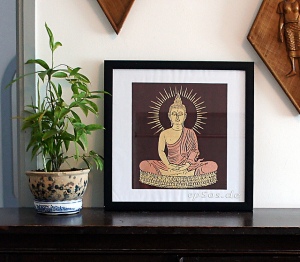 Needless to say, it is pretty hard to focus during meditation. Whether it is insight meditation or concentration-based meditation, focus is a must at all times.
Needless to say, it is pretty hard to focus during meditation. Whether it is insight meditation or concentration-based meditation, focus is a must at all times.
Although Vipassana meditation (or insight meditation) does not require one to focus on one object for a long span of time, it still requires you to focus although not as much as in concentration-based meditation.
How to Focus in Vipassana Meditation
The principle of Vipassana is to be aware of everything that is happening around you and within you. It could be physical sensations, movements, pain, objects near you, sounds, sights etc.
You’re in the now — in present moment, totally aware. Although this stage is hard to achieve and only advanced practice leads a meditator to being purely in the now, you can get there with constant and deliberate practice.
A good way to start is to set aside a time during the day or morning. Mindfulness takes practice so make sure you stick to a schedule for your meditation. No matter how much you try, you cannot “live” and “be in the present” all the times.
For example, to live in the present means just to be aware of what is here and now. It means you do not “remember” names of people or objects. Because strictly speaking, recalling means you’re going back in the past. Your mind is searching for that name and you’ve lost the present moment.
A way to bring your focus back to the now is to start simple. When you observe thoughts coming to you during Vipassana, simply make a mental note “thinking” or “thought” and move on to what’s here and now.
Because if you focus on a thought that just went by, you’re still in the past. You’re dwelling. Become aware of that thought and move on to the next thing that is happening for you.
Truly speaking, you notice the birth of an object (thought in this case), its existence and it’s death.
According to this brilliantly written piece, you can make your abdomen as the object in your Vipassana. The abdomen will rise and fall with every breath. The rise and fall are two separate objects — so make sure you are aware of each of these objects’ beginning, middle and end.
So you start with the rise. You notice the beginning of the rise. You notice the moment in between and then you notice its end — it’s the end of the rising of the abdomen (don’t confuse this with ti’s fall which is a separate object).
One More Thing…Remove the “I” and Name of Object
When you make a note “thinking” when you’re thinking a thought, don’t bring conventional labels into picture. For example, avoid noting “I am now thinking about Tom” or “I am now thinking about dinner tonight” Don’t label objects and don’t bring “I” into picture. You want to be non-personal during meditation. Just let it be noted as “thinking.”
To read more about Vipassana for beginners, click here.
Image: epSos.de
